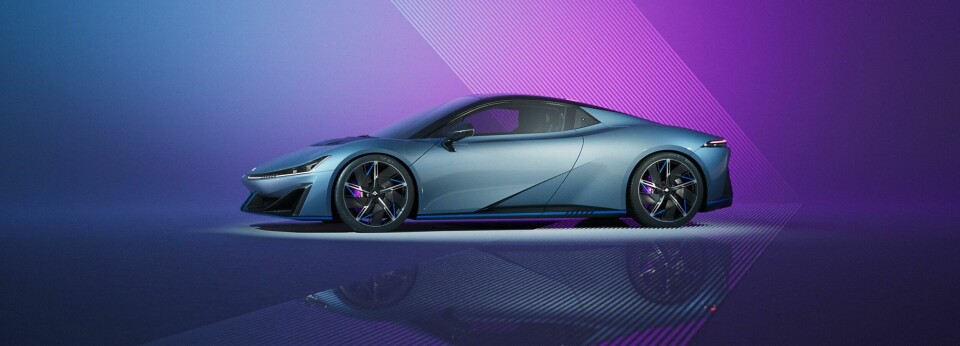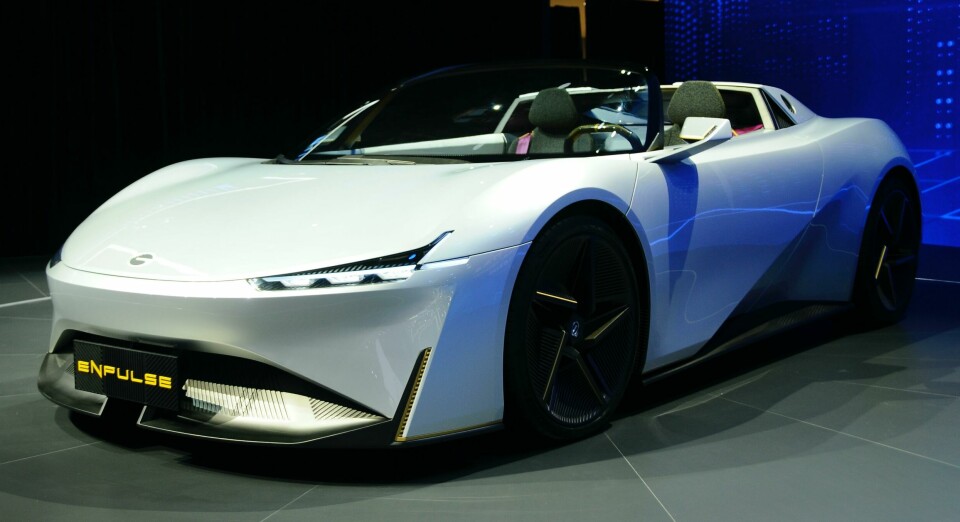
GAC lifts the lid on first ‘supersports’ car
GAC has formally unveiled its lightning-quick electric sports car, the Aion Hyper SSR. A mix of sleek styling and aggressive aero is justified by some staggering performance figures. Car Design News takes a closer look
Following a sneak-peek earlier this month, GAC has taken the wraps off its first high performance coupe, the Hyper SSR. Previously teased under the codename ‘AS9’, the model has been officially revealed and will be sold under GAC’s all-electric sub brand Aion.
A sports car – or supersports car in this case – has always been a dream of the design team at GAC. The Hyper SSR is not only a first for the Chinese automaker, but for the Chinese market: Aion lays claim to China’s first road-legal, mass-produced electric supercar. And it certainly fits that bracket: design aside, its powertrain promises some neck-bothering acceleration, slingshotting the car from 0-60mph in less than two seconds.
”We have been developing cars for about 16 years, but they are all for normal customers and for daily use. At a certain point, you ask yourself, is that enough?” says Fan Zhang, VP and head of design at GAC. ”Car makers always have dreams of making a super car, and now we have one.”
Supercars – if not sports cars in general – are a rare breed from domestic Chinese brands, so it is difficult to know what to expect. But designed in conjunction with teams in China and California (and soon Milan) the Hyper SSR is classically proportioned with a snub-nosed front end, wide hips and low-slung body. The top half of the car is more refined, while the bottom half features ’open engineering’ with visible aero-boosting splitters and intakes.
Like many cars in this category, the glasshouse is a prominent feature of the overall design and sits towards the front like the capsule of a fighter plane. It also appears to flow through to the rear of the car thanks to a contrasting black roof, which tapers down from the rear header to centre of the rear deck. A retractable active rear spoiler can boost downforce when needed and does not impede on the design when raised. Wide, thin taillights adorn the rear mask, separated by a discrete Aion badge, with an aggressive W-shaped diffuser that cuts into bumper. It does a good job of filling the void left by a lack of exhaust pipes, which would inevitably take centre stage in an ICE-powered sports car.
From the side, a subtle shoulder line is balanced by more of a defined crease that flicks upwards from the baseline towards the rear wheel arch. There is very little arch on display thanks to large turbine wheels that fill the space well.
Up front, and it is more of the same: sleek, refined lines balanced by more overt, functional design. The hood is almost entirely smooth save for another discrete Aion badge, with the upper mask rising upwards to blend with the front wheel arches. Thin, wide headlights follow the same lines, flicking upwards at each corner into the arches. Gaping air intakes combine with a slim front splitter that is more structural in its design, giving the appearance it is bolted on to the front of the car almost exclusively for performance reasons.
The Hyper SSR is more “extreme, more dramatic” than the Enpulse concept from which it is inspired, says Zhang. Elsewhere, quite the opposite tends to happen, with flamboyance watered down to meet the demands of a production model. GAC is clearly looking to come out swinging with its first crack at a sports car.

The interior is based on an ‘exoskeleton architecture’ and is ultimately designed around the needs of the driver. Tubular structures that run down the centre of the car host the armrest and drive mode toggle, along with two trapezoid air vents. Those tubes are mirrored on the ceiling and contain aircraft-inspired overhead vehicle controls, a “unique layout” according to GAC and one that takes the driver experience ”to a whole new level.”
Two screens – one large 14.6” central display and an 8.8” driver display set further back – round out a restrained, uncluttered HMI. If the exterior was not indication enough, then the hexagonal ‘racing car inspired’ steering wheel should cement the fact that this is a driver’s car. There are no stalks sticking out either side, which might otherwise get in the way during moments of enthusiastic cornering. Instead, all controls are mounted on the wheel itself, including indicators, headlight controls and wiper functions. It remains to be seen how this might feel in practice, but everything appears to be within thumb reach.
In terms of CMF, a pleasant ombre pattern on the seats and door cards brightens up what is otherwise a pared-back racing-style interior. Bright blue fades into pinky-purple, rounded out with aqua blue upholstery on the steering wheel. A metallic ‘Hyper SSR’ badge is mounted on the dash, in case you forget which car you’re driving.
The sports car may be a first for GAC, but the design team was not quite working from scratch, building upon earlier show cars and experiments with aerodynamic performance. The challenge was translating what had been learned from those projects into a product that sells in a relatively unexplored sector in China.
Pontus Fontaeus, head of GAC’s Advanced Design studio in Los Angeles, explained that the Enpulse concept was a natural follow on from the ENO.146, a super-slippery concept with aero at the fore: “We already had a theme there, but it is all about innovation, and asking what would a sports car could be for the Chinese domestic market, which doesn’t have a heritage in this sense.”
He describes the Hyper SSR as a “victory” for the brand following speculation both inside and outside the company as to whether the Enpulse would go any further. “Fan had been lobbying the executives for some time,” jokes Fontaeus. The original Enpulse design was “correct in many aspects” but “we turned up the volume a little bit,” he added.
Altogether, the Hyper SSR carries a menacing face that backs up some fairly startling performance claims: 12,000nm of torque, 1,225bhp and 0-100km in 1.9 seconds. Yikes. GAC says the model on show is currently a pre-production example with customer deliveries expected for the fourth quarter of 2023. Zhang praises the collaboration between the teams in China and Los Angeles, which has “finally brought to reality” the vision of an electric supersports car.































